Recently arrived in New York City and perusing its newest architecture exhibition, a visitor to the Museum of Modern Art might think—contrary to what they would have witnessed on the way to the museum—that the city has been irreparably decimated by the Covid-19 pandemic and the slower-moving ecological and social disasters of our contemporary “polycrisis.” The twelve projects on display in the exhibition New York, New Publics present the city as a post-apocalyptic landscape where architects build upon the rubble and ruins of a bygone civilization. Dodging storm surges, New Yorkers seek refuge under discarded building fragments and in concrete bunkers, as they recall episodes from a more heroic past with an assist from augmented reality technologies—or so the curatorial story suggests.
There is Freshkills Park, Field Operations’ two-decades-and-counting endeavor to build a 2,200-acre park where visitors will one day hike and birds will nest atop the monumental landforms of a half-century of the city’s discards. Meanwhile, at a diminutive community garden in Queens, contemporary architectural detritus—a concrete facade mockup from a luxury condominium in downtown Manhattan—is turned on its side and into a potting shed. This is proof of concept for New Affiliates in its effort to match expensive and materially intensive construction waste with scrappy garden plots across New York City in a bizarre salvage operation. In interviews, the architects have expressed an interest in the relationship between architecture and anthropology; and in the show there is a whiff of a “salvage paradigm”—a 20th-century ethnographic attachment and missionary zeal for the preservation and documentation of cultures on the brink of extinction. But now the endangered are us, and the designs on display provide fodder for contemporary anthropologists studying the art of living among capitalist ruins.
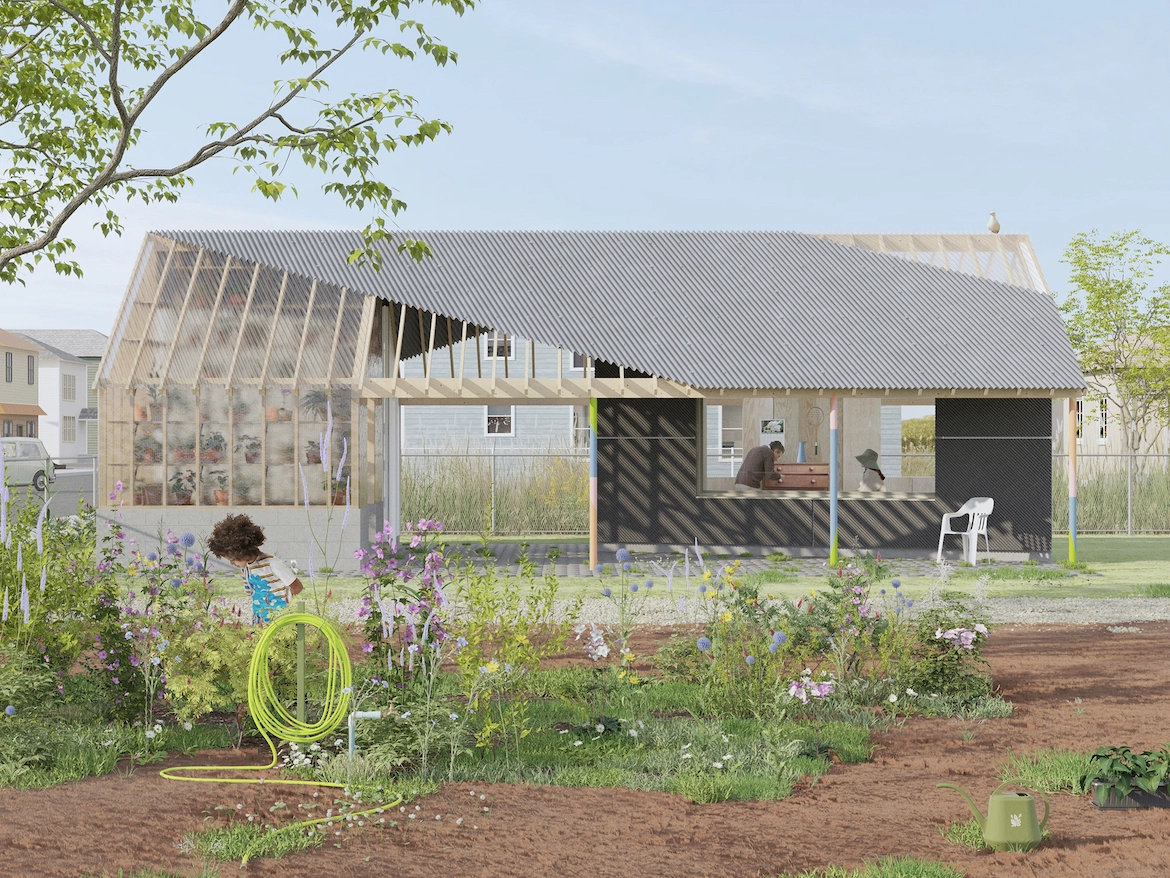
New Affiliates and Samuel Stewart-Halevy. TestBeds — The Garden by the Bay, Edgemere, Queens. (2020). Image by New Affiliates and Samuel Stewart-Halevy
Other architects included in this patchwork survey seek to build on existing public infrastructures, remnants of flusher and fairer times. Instead of tearing down the city’s public housing, which is in dire need of investment and repair, Peterson Rich Office offers “scalable solutions” for the New York City Housing Authority. They propose to preserve and enhance the 70-year-old frame of the Cooper Park Houses with new terraces and additional units. Only If, another firm, looks to the city’s similarly underfunded network of public pools, specifically one distinctive natatorium designed by Morris Lapidus and built as part of an attempt to distribute recreational infrastructure to neglected neighborhoods in the late 1960s. The firm’s principals imagine its adaptation to year-round use via the straightforward addition of a roof and recreational center. Fire hydrants, too—nodes in a citywide system of public safety well over a century old—are reengineered to provide drinking fountains and heat relief in steampunk mockups by architect Tei Carpenter and artist Chris Woebken. But these “recently completed” speculative projects only exist as proposals and mockups. Unlikely to take physical form, they are primarily documentation of existing conditions.
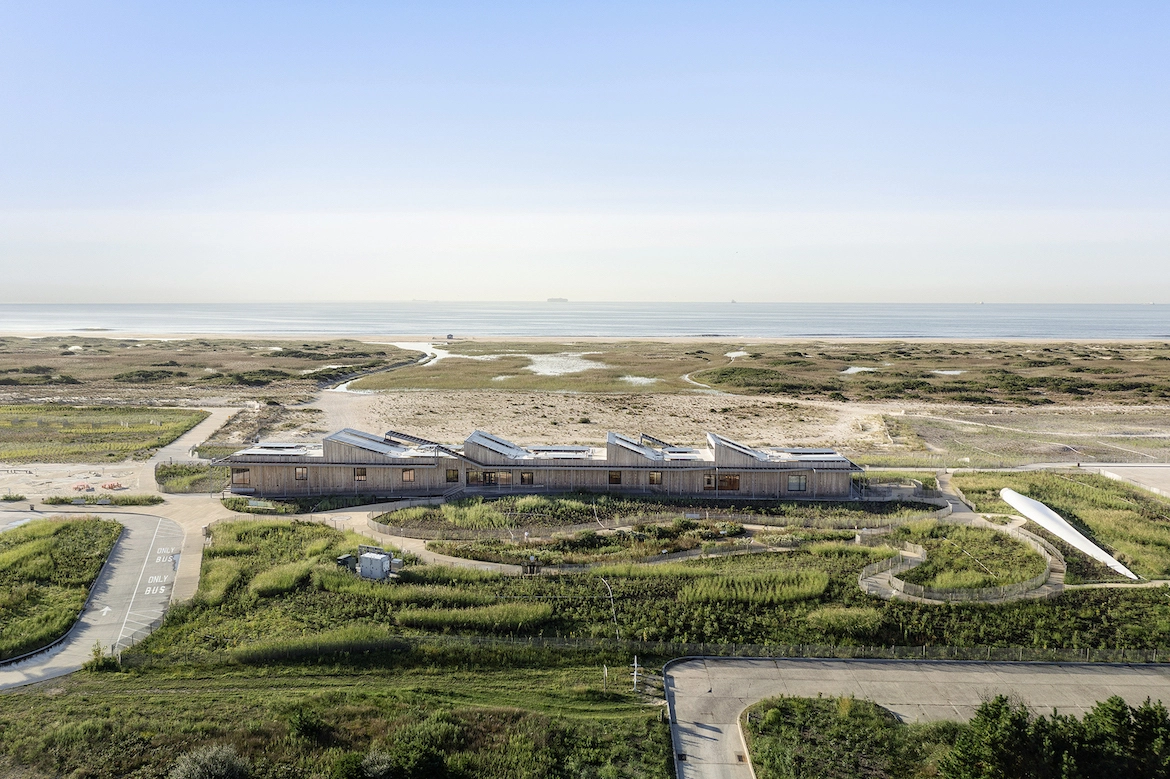
nARCHITECTS. Jones Beach Energy & Research Center. (2018-20). Aerial view looking southeast. Photo by Michael Moran
The built projects, too, work with an existing “public record,” whether the long-ago-harvested longleaf pine that CO Adaptive repurposed from a former foundry, or Adjaye Associates’ translation of historical documents into tile murals for the headquarters of a storied healthcare workers union. A certain humility pervades, or is performed, when architects are cast as stewards of existing materials, sites, and structures with work that is ecologically responsible and deferential to “local communities.” The curators, Evangelos Kotsioris and Martino Stierli with Paula Vilaplana de Miguel, position the work on display in contrast to the hubris of urban renewal and the violence of large-scale infrastructure that tore minority neighborhoods apart only a half-century ago. Garden-tending succeeds the modernist world-building that has historically characterized MoMA’s relationship to architecture. At best an archival record of a cultural moment, the show is notably missing any aspiration to advocacy.
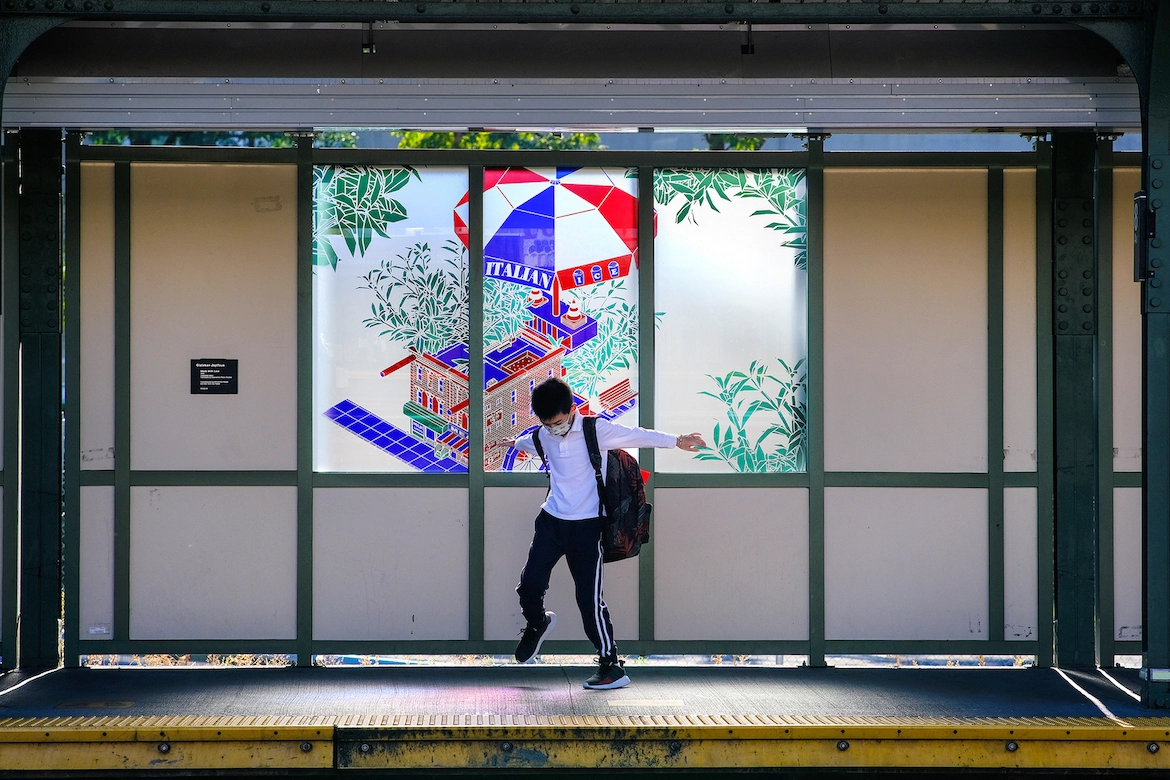
Olalekan Jeyifous. Made With Love. (2017-20). Italian Ice. Photo by Anthony Artis
A local visitor, more confident that the end times have not quite arrived, might instead wonder about the “new publics” advertised in the title. Does the work on display indeed model a new relationship to the city’s publics, a term usually rendered in the plural to make room for those historically marginalized, displaced, or ignored altogether by citymakers? The last three years, they will recall, brought a powerful and woefully incomplete racial reckoning, including indictments of the architectural profession’s commitments to “diversity, equity, and inclusion.” A map of projects at the exhibition’s start seeks to make an argument of inclusion by virtue of geographic distribution. The curators also commissioned videos of every project, a valuable addition to the usual exhibition fare of models, drawings, and photographs. These emphasize that the works on display are not architectural flights of fancy, but instead projects engaging real sites and real people. That said, when the videos depict an afternoon by the pool or a project demo orchestrated for the exhibition, they put a public on momentary display, while providing little social context. And when it comes to public architecture, good form is nice, but context is everything.
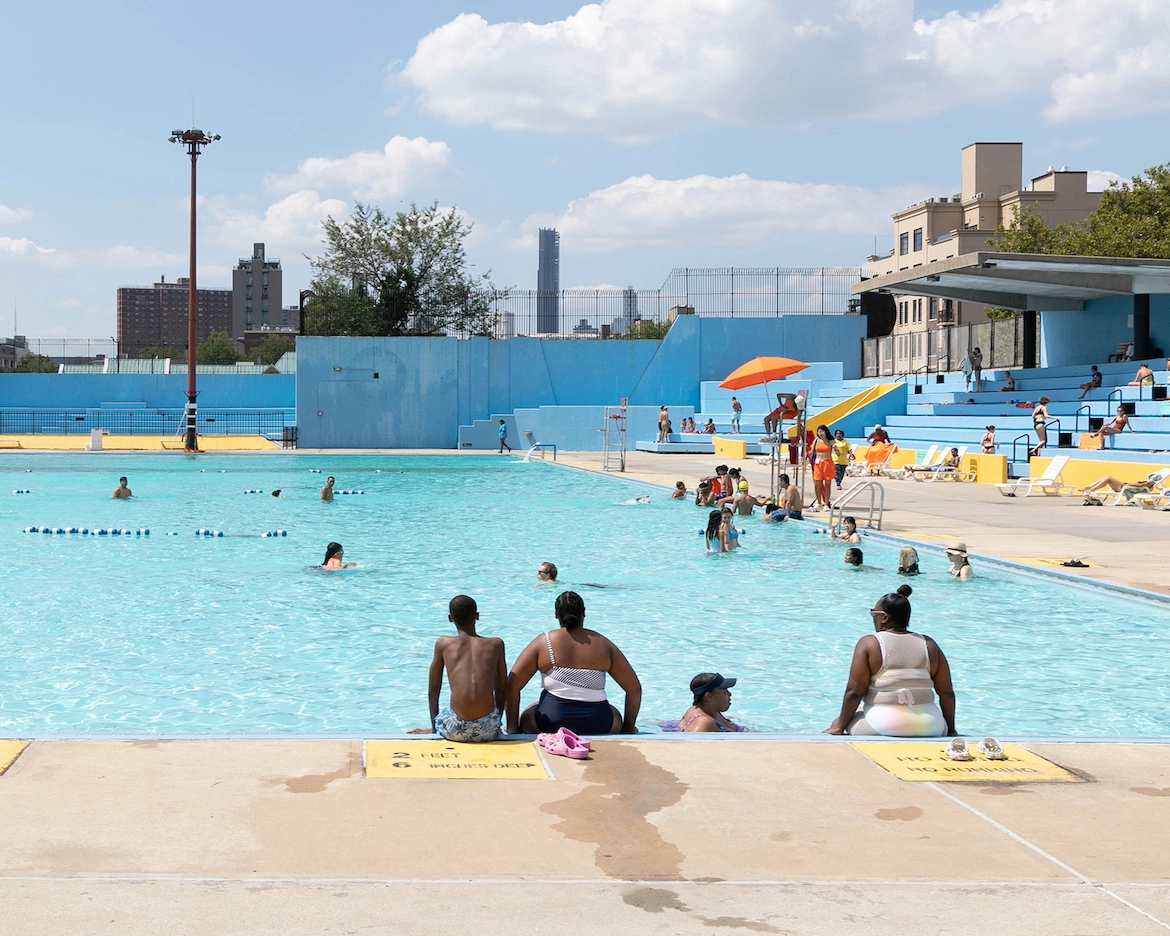
Only If. The People’s Pool. (2019-20). An existing shading structure of the Kosciuszko Pool designed by Morris Lapidus. Photo by Anna Morgowicz
The videos portray people of color and wall texts suggest benefits rendered to nondescript “local communities.” Yet there’s no acknowledgement that many of the projects on display are located at the frontiers of the city’s relentless gentrification, in areas experiencing active displacement of longtime residents, and an influx of people like, well, architects. Which public will benefit from an improved “People’s Pool” in Brooklyn’s Bedford Stuyvesant, a neighborhood that reportedly lost 22,000 black residents and gained 30,000 white ones in the last census decennial? Spaces of gentrification won’t look so different from the projects of urban renewal to anyone aware of the violent urban processes that birthed them. Similarly, attempts at engagement fall flat without any real muscle to realize the projects behind them. Consultation can be its own form of exploitation.
Ultimately, there is little meaningful inclusion of the city’s diverse publics in collective life without public funding, and it is these rare outliers to the exhibition that offer something worth emulating. There is the generous public space of a new waterfront park at Hunters Point South, built for residents of affordable housing and students of new schools to come. Olalekan Jeyifous’s murals are a modest public art project in a Brooklyn subway station, but joyfully and symbolically combine architecture and immigration history to represent the multiple publics of a polyglot neighborhood. And a net-zero nature and energy center provides space to nurture and educate a new public on a barrier island park (albeit one with its own history of exclusion that goes unmentioned in the exhibition). If the curators really sought to make a case for architects’ abilities to not only salvage but also expand the public realm, there was more out there to choose from. Now, imagine murals in every subway station—but also elevators, allowing folks in wheelchairs, people with strollers, and everyone else to actually move freely around the city—and well-distributed, healthy spaces to educate future generations to respect the environment and each other. These would still be small but meaningful ways of imagining a city where we can face problems collectively and build a new world out of the ruins of this one.
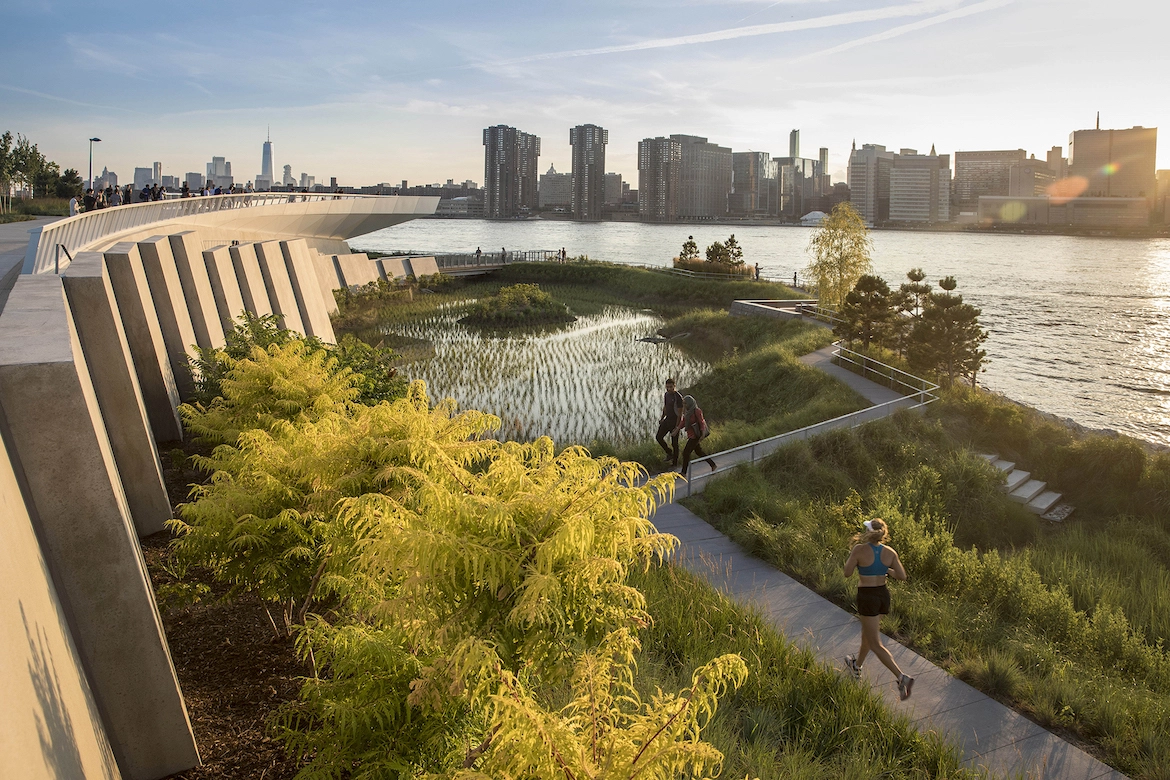
SWA/Balsley and Weiss/Manfredi with ARUP. Hunter’s Point South Waterfront Park, (2009-18). Wetland walkway and overlook. Photo © Lloyd/SWA, courtesy of SWA/Balsley and WEISS/MANFREDI




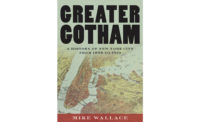
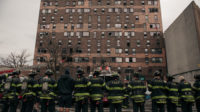
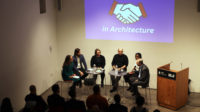
Post a comment to this article
Report Abusive Comment